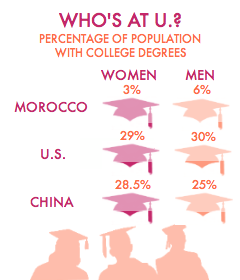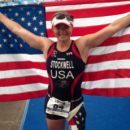
January 7, 2013 | Health and Well-Being, War and Peace
Running on Guts, Pride and One Good Leg
Amputee hero Melissa Stockwell

By Willa Kendrick
When an insurgent’s bomb destroyed her left leg in 2004, Army 1st Lt. Melissa Stockwell became the first American women soldier to lose a limb in the Iraq war. But enduring an above-the-knee amputation didn’t slow her down for long. Now 32, having retired from the Army with a Purple Heart and a Bronze Star, she works as a prosthetist, fitting other amputees with artificial limbs. An avid runner/biker/swimmer, she’s also a champion paratriathlete and has become an inspiration to other disabled athletes as co-founder of dare2tri, a free paratriathlon training facility for physically disabled people in her native Chicago.
What were the challenges you faced returning home from Iraq as an amputee?
Learning to live with the loss of my left leg was obviously a new experience. But when I look back at it, I see things that I had to overcome and that I overcame, instead of the challenges. Honestly, there are more successes in my experience than challenges.
Were there particular hurdles you had as a woman?
One thing that may bother women more than men is the whole cosmetics of the prosthetic leg. You always want to make sure the leg looks good and that you look as normal as you can. You wonder if you can still paint your toes and wear heels.
Rather than trying to hide your amputation, you flaunt it. Why?
I choose not to wear a cosmetic cover; I have a cover in the American flag pattern instead. I do this because I am very proud of how I lost my leg; I was proud to be in the military and proud to be an American soldier. I want people to see that I am out there in the world just like they are.
What motivates you to participate in triathlons and ironman races?
I do it because I can. I feel very fortunate that I have my life; I have three other good limbs; I still have my eyesight and my mind. Just the fact that I can get out there and do it, I am proving to myself and to anyone that looks on that losing my leg doesn’t stop me from doing what I want to do.
What’s the hardest part?
Just like for any other athlete, it’s training for competitions. It’s a lifestyle, it’s the early mornings, and it’s pushing yourself. The only added part is that I have to make sure my prosthetic fits correctly. Sometimes my limb breaks down before the rest of my body does and that can be frustrating.
What’s the biggest obstacle for amputees who want to get involved in sports?
Thinking you can’t do something when really you can. After I was injured, someone asked me if I wanted to ski, and I thought, how in the world am I going to be able to ski on one leg? And then I got out there and had the time of my life. It really changed my perspective on what I could still do with my life. Getting out there and trying, amputees would be amazed at what they can still do.
What do you love about working with prosthetics?
It’s extremely rewarding; you literally get people back up on their feet and give them their life back. When I stood up for the first time after my accident and I looked over at the guy who helped me do this, I thought, I want to be on that side. I am able to help my patients both physically and mentally.
Tell us about dare2tri.
I cofounded dare2tri with some good friends in January of 2011. It is a Paratriathlon club for physically disabled youth, adults and service members. We currently have more than 130 athletes; over half of them have crossed the finish line in their very first triathlon. Our motto is "one inspires many." So when they are on the racecourse together and may be struggling, they help each other keep going.
What advice do you have for young women who want to make a difference?
Dream big. Pick something you want to do and do it. It might be scary, it might be hard but you need to find your own path and just go for it.